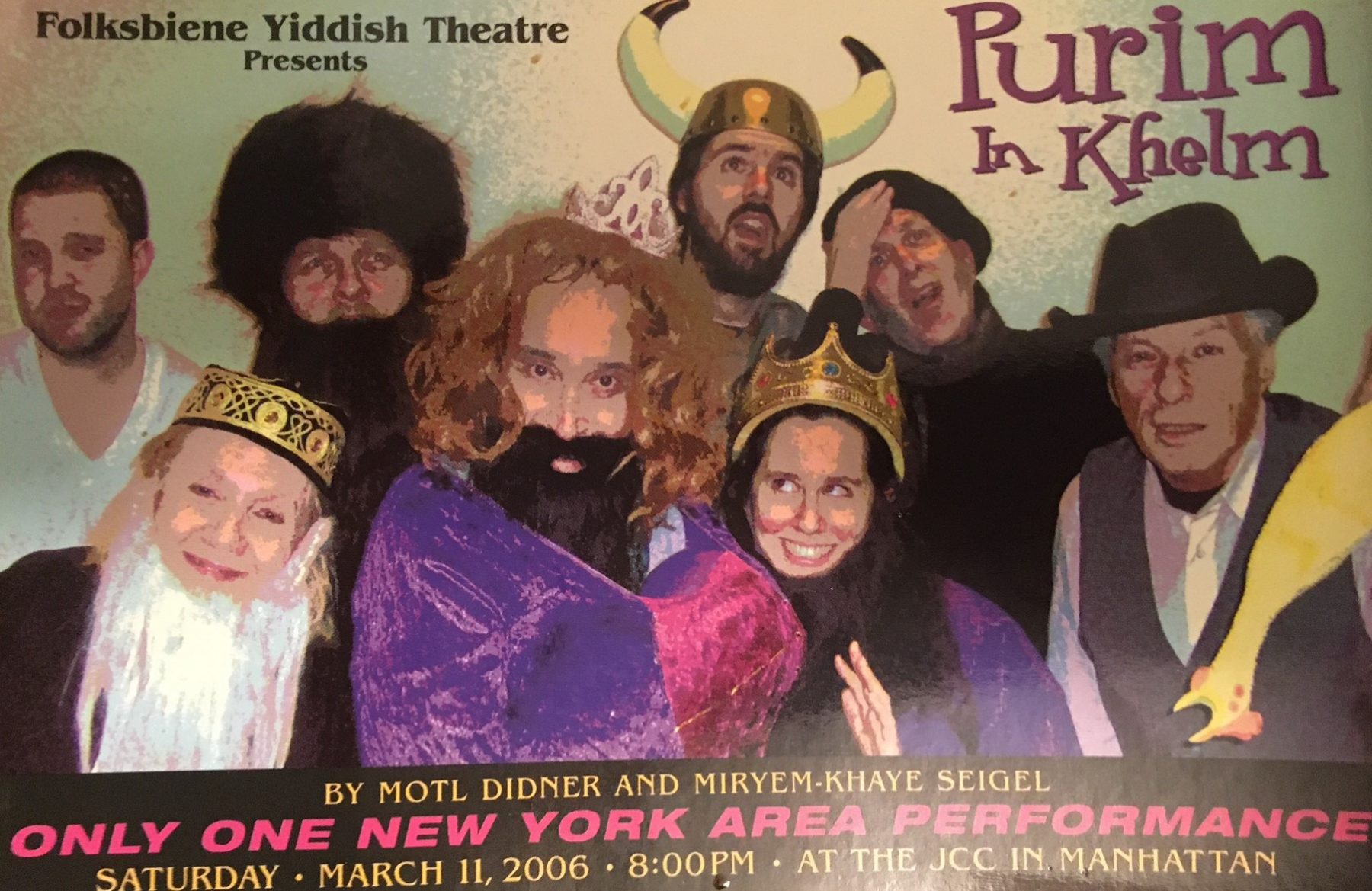
A Timeline of Yiddish Drag
The Digital Yiddish Theatre Project
Yiddish drag is suddenly a thing. It’s not hard to figure out why. The mainstreaming of drag on the one hand and the rise of gender-conscious Yiddish on the other dovetailed perfectly to create a new outlet for Yiddish creativity.
But in some ways, Yiddish drag is nothing new at all. Some of that might depend on your definition of drag: Does simple cross-dressing make something drag? Or is drag an art form that arises specifically from LGBTQ culture? Does it have to involve the heightening of gender markers? Is it always funny? We have no idea. But we knew we wanted to find some forebears to the current crop of Yiddish drag performers, to start situating the current outpouring of imagination into some kind of historical context. What we’ve found has been frankly astonishing. Yes, we knew about Yidl mitn fidl. We knew about Bobe Yakhne; we knew about Yentl. We just had no idea there has been so much gender flipping and so many different ways that drag has presented itself in Yiddish culture. We knew on some level that Yiddish theatre, emerging from Purim shpils in which women did not traditionally take part, has always been a drag medium, even after women actors were the norm on European stages, and that even the earliest Yiddish theatre embraced women performers. We just couldn’t have predicted how many times and ways this manifested. As far as we can tell, there has never been an era without drag performance in Yiddish theatre history.
Equally amazing were the family stories we started hearing. The photo of a great-grandmother dressed as a dapper 1920s dandy—suit and tie, straw boater, coolly cradling a cigarette—in a family album with absolutely no explanation. The mock-weddings at Catskills resorts that featured men as both bride and groom. The certain uncle who always, always showed up as a woman for Purim. We started remembering our own drag adventures. My wife, a butch dyke, in a tight dress as a singer in a girl group, and me in a borrowed wide-shoulder suit as her skinny boyfriend, for a lesbian party sometime late in the 1980s (we were both in drag).
What has become clear that drag is a regular and normal feature of Yiddish cultural life. We can’t yet process what it means, why this form is so enduring, or what need it fills, but we know it lives here with us and it feels like liberation. We will continue building this timeline for a few years as we turn up more data. Feel free to send contributions our way. Meanwhile, we at the Digital Yiddish Theatre Project wish our Yiddish family a happy Pride and all the genders you want.
Faith Jones, for the DYTP
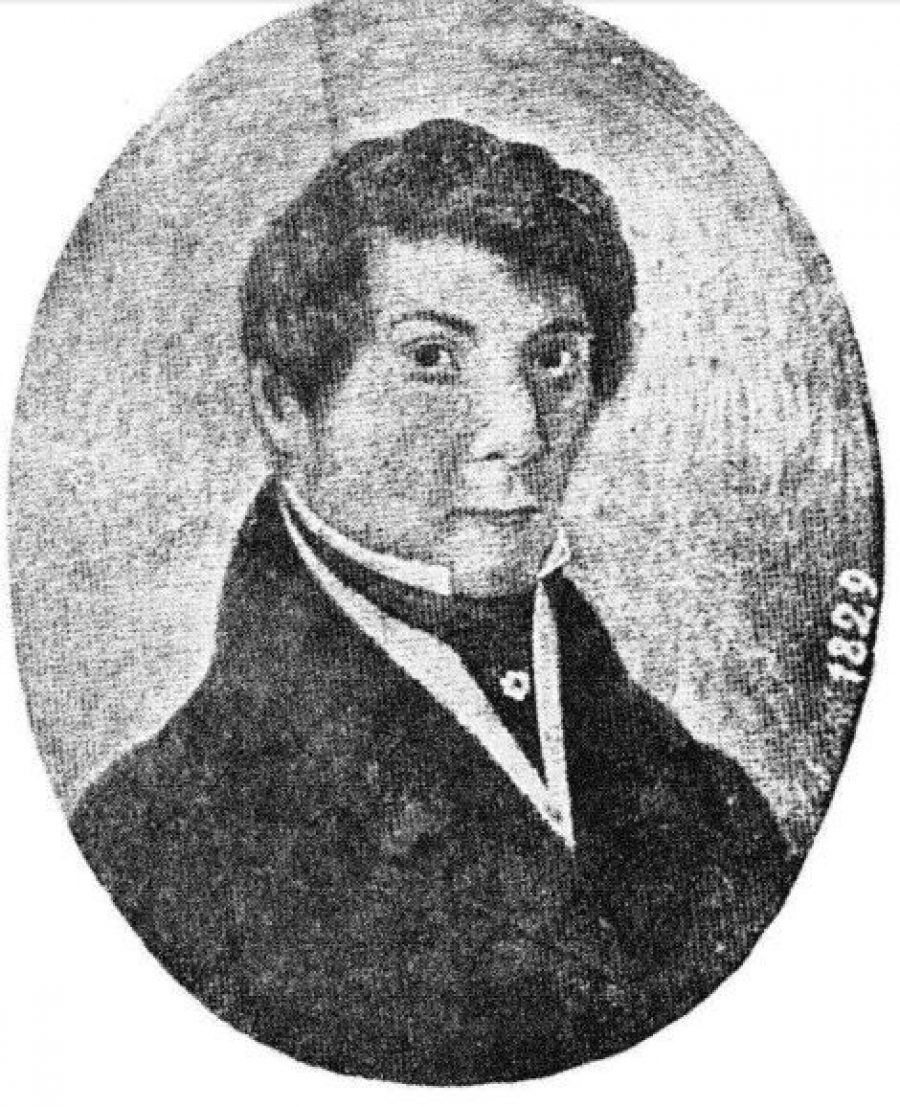
Shloyme Ettinger
1860s In Shloyme Ettinger’s “Serkele” the title character is typically played by a man (starting with Goldfaden).
1875 Nine-year-old Mendl Teplitski plays “dos eynikl” with a group of visiting Broder Singers in Nikolaev; teenage Yankev Katzman plays “di bobe” in Di bobe mitn eynikl, attributed to Avrom Goldfaden. Both are female roles.
1879 In Goldfaden’s Di kishefmakherin (The sorceress) the role of Di Bobe Yakhne is traditionally played by a man.
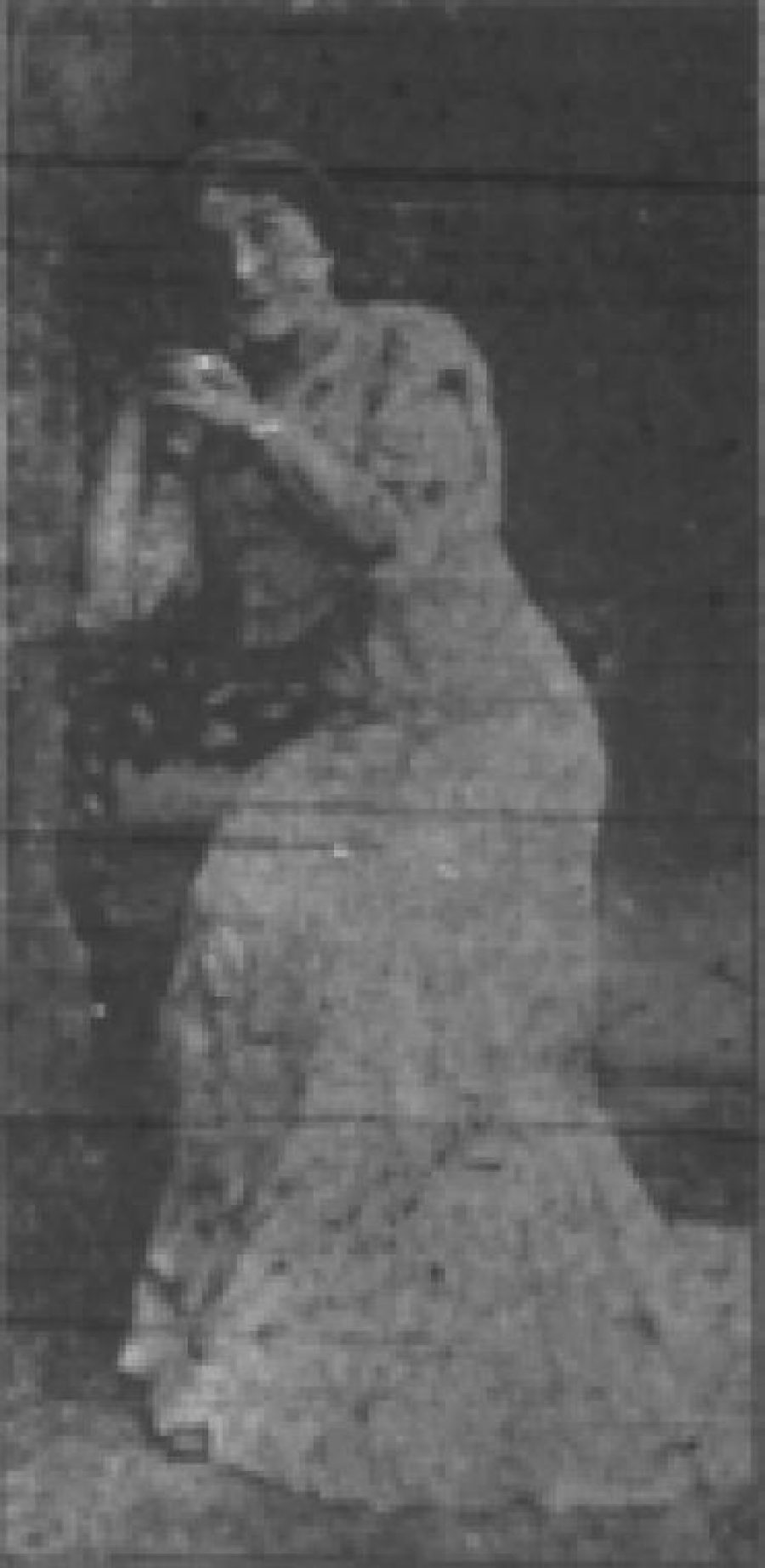
Thomashefsky fills in for an actress
1881 Thirteen-year-old Boris Thomashefky is pressed into service to fill in for an actress (either ill or faking an illness at the behest of uptown Jews opposed to popular entertainments) at one of the earliest performances of Yiddish theatre in New York.
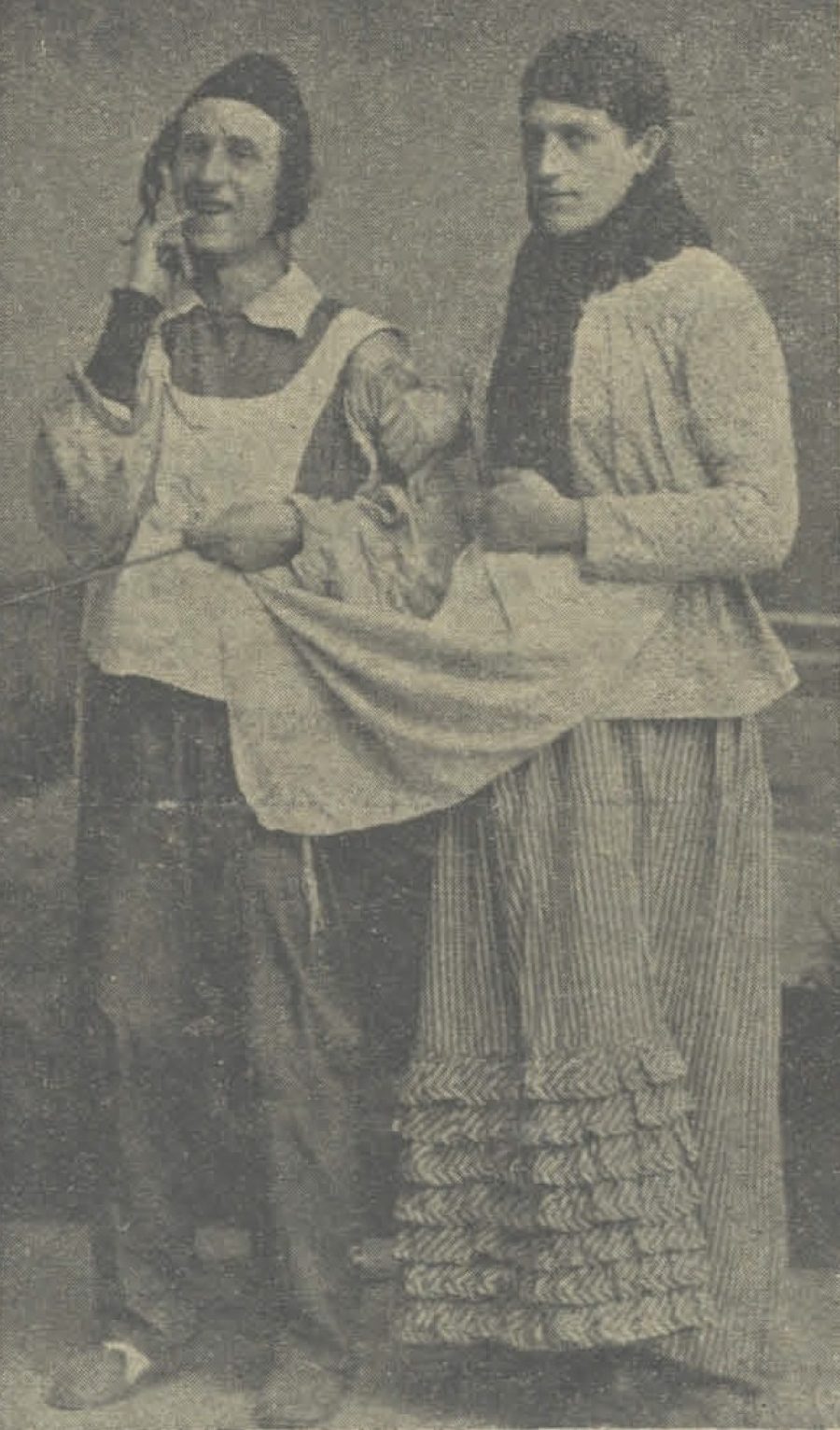
From left: Yoyne Raysman in the role of Goldfaden’s Shmendrik in 1884. From right: Herman Weinberg as “Brayne” (the then-18-year-old Weinberg played the “female roles” in Goldfaden’s repertoire).
1884 Herman Weinberg, who had a high voice, played “Brayne” in Goldfaden’s Shmendrik.
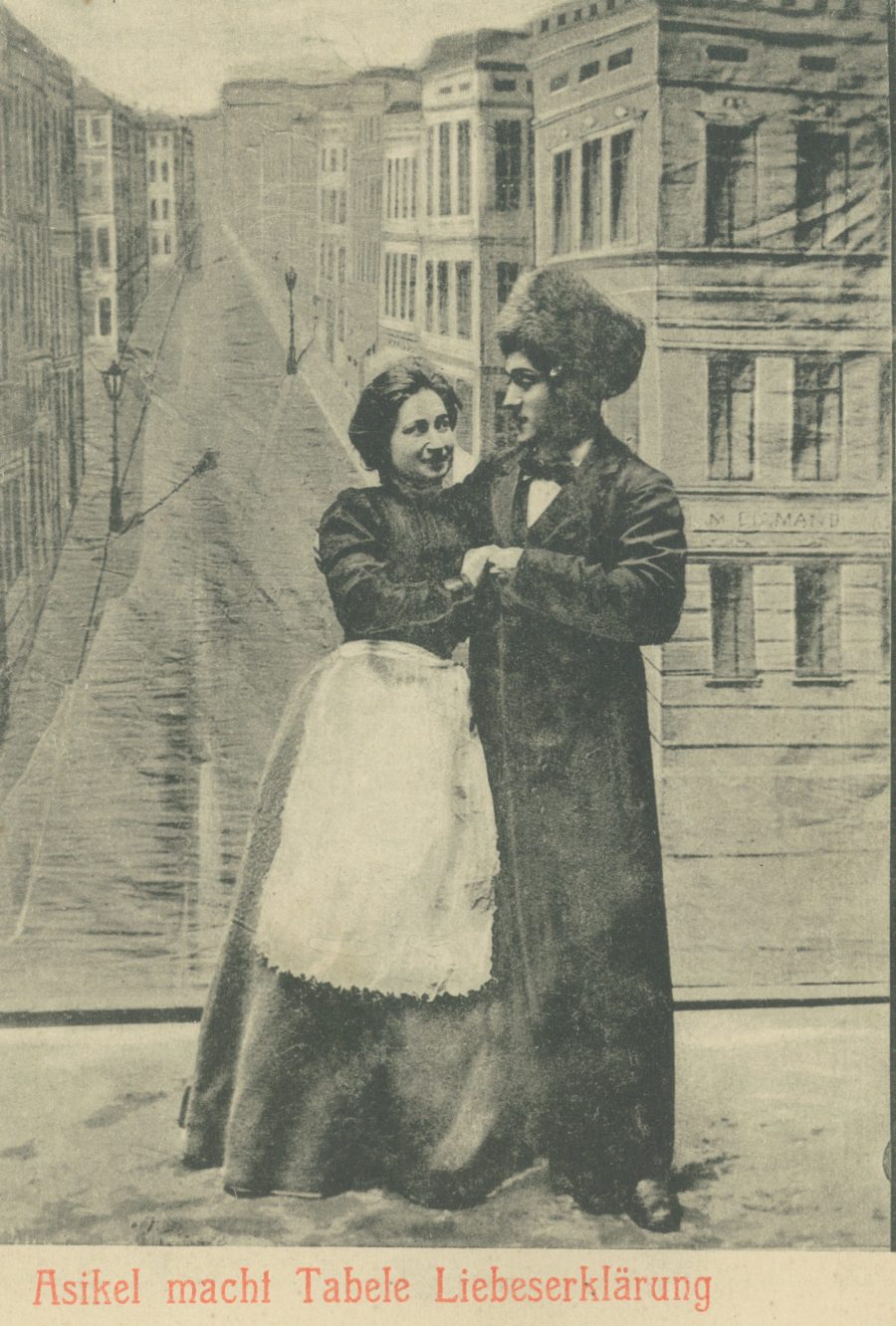
Fayvl and Saltshe Vayzenfraynd: Isaac declares his love for Taybele.
1893 Saltshe Vayznfraynd plays a tailor, dressed in pants and a jacket with a cap and tape measure around her neck, in a Złoczew tavern with the Broder Singers.
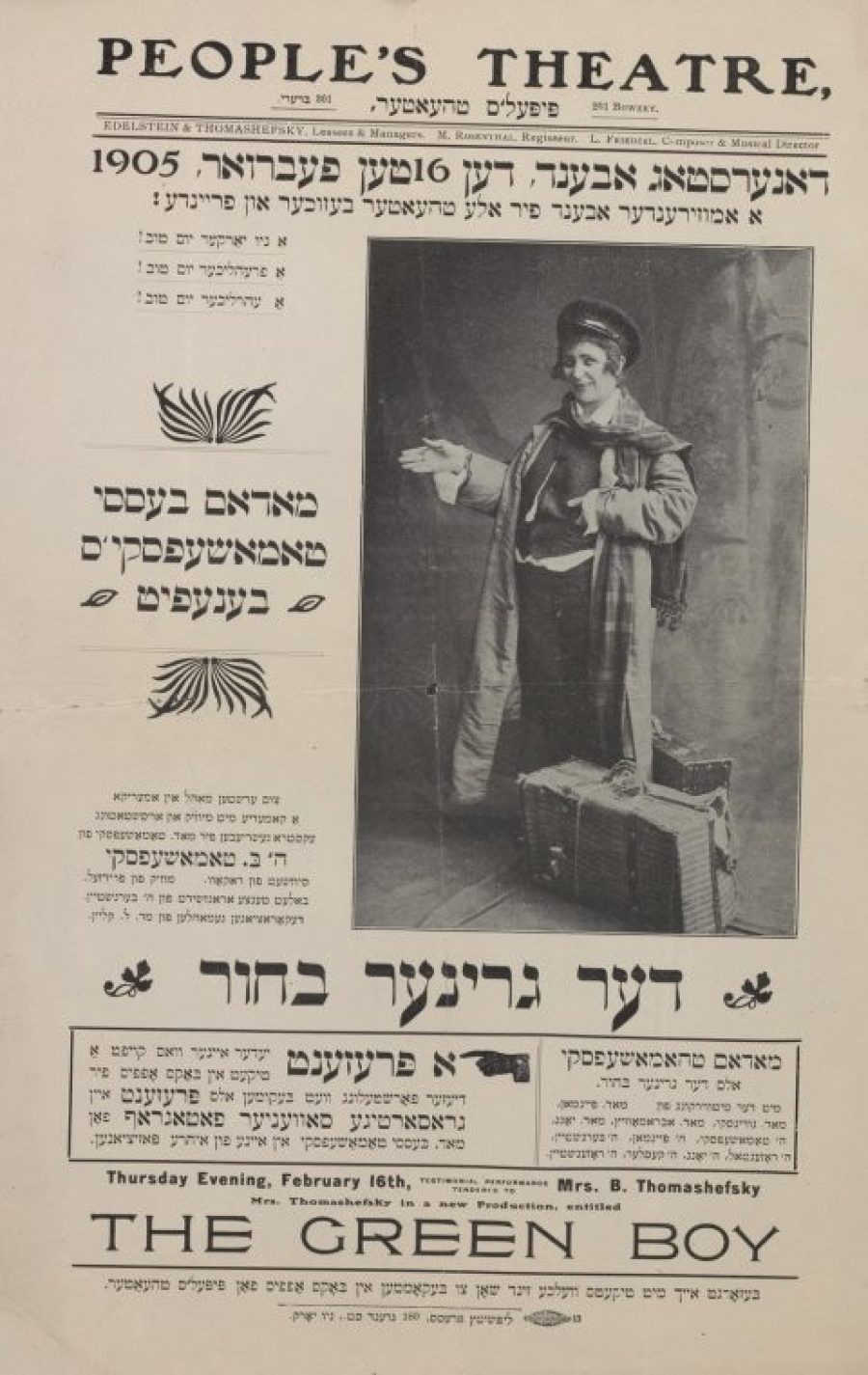
Bessie Thomashefsky in Rakov’s Der griner bokher (The Green Boy), People’s Theatre, New York City, 1905.
1905 Bessie Thomashefsky stars in a “trouser” role as Der griner bokher at the People’s Theatre.
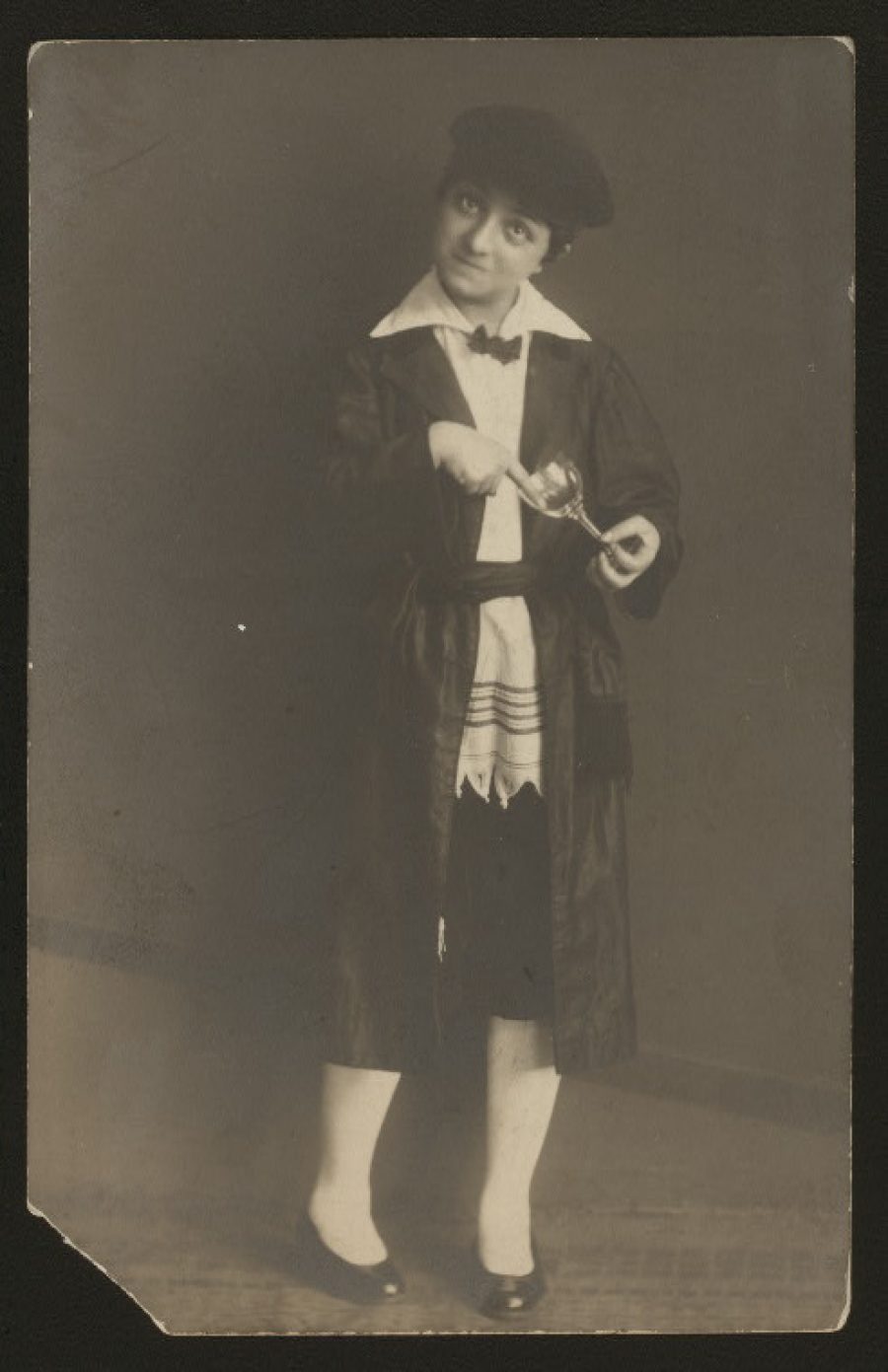
Molly Picon as a yeshive bokher.
Molly Picon had a long history of trouser roles: starting at least as early as 1918 (in Yankele, a part she played many times). Film appearances in trouser roles were Yidl mitn fidl (1936) and East and West (1923).
1922 Miriam Elias plays Khonen in a Habima production of The Dybbuk, directed by Evgenii Vakhtangov.
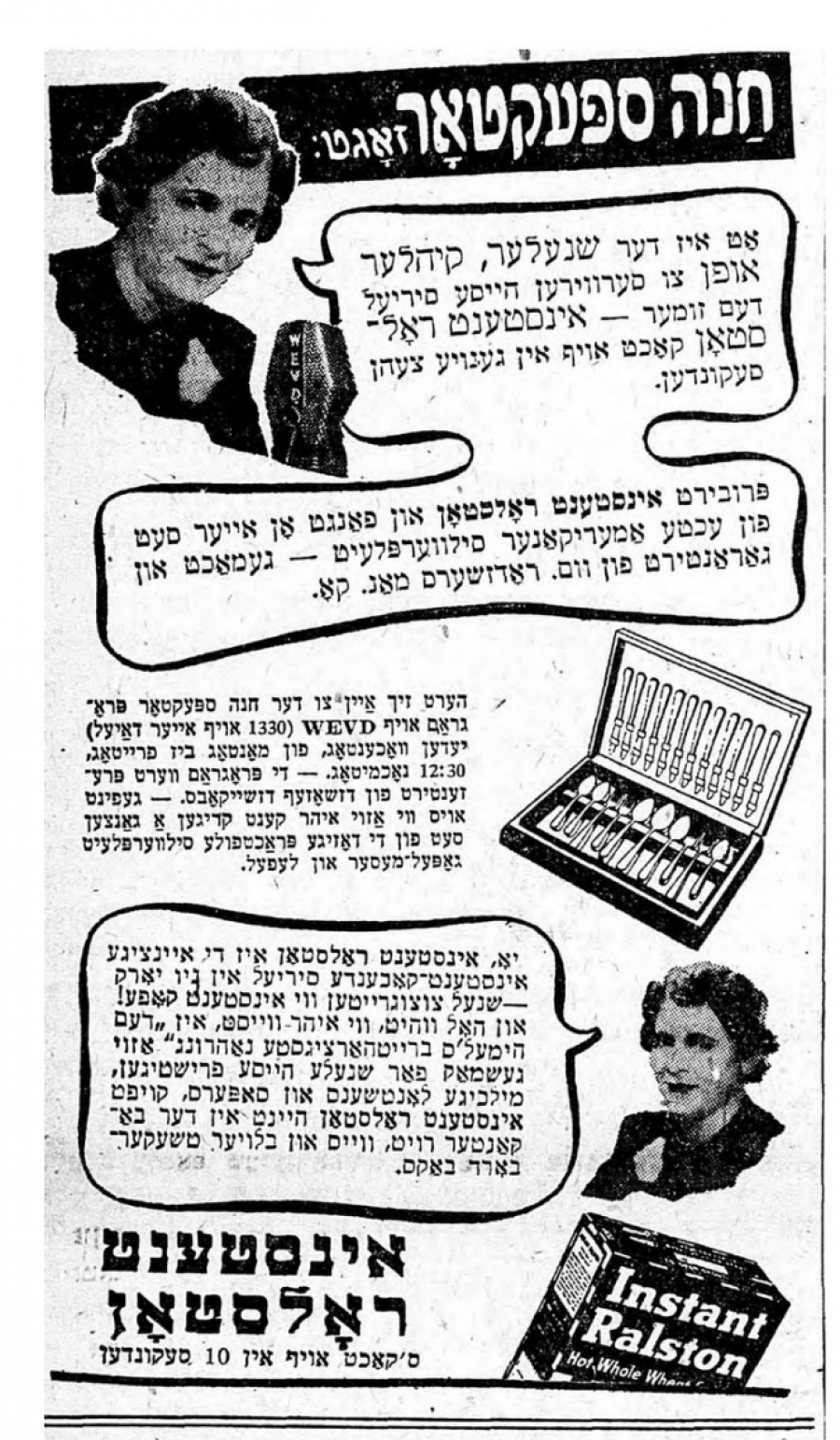
Channah Spector
November 1925 A production of The Dybbuk at the Amphion Theatre, in Williamsburg, featured Chana Spector as Khonen.
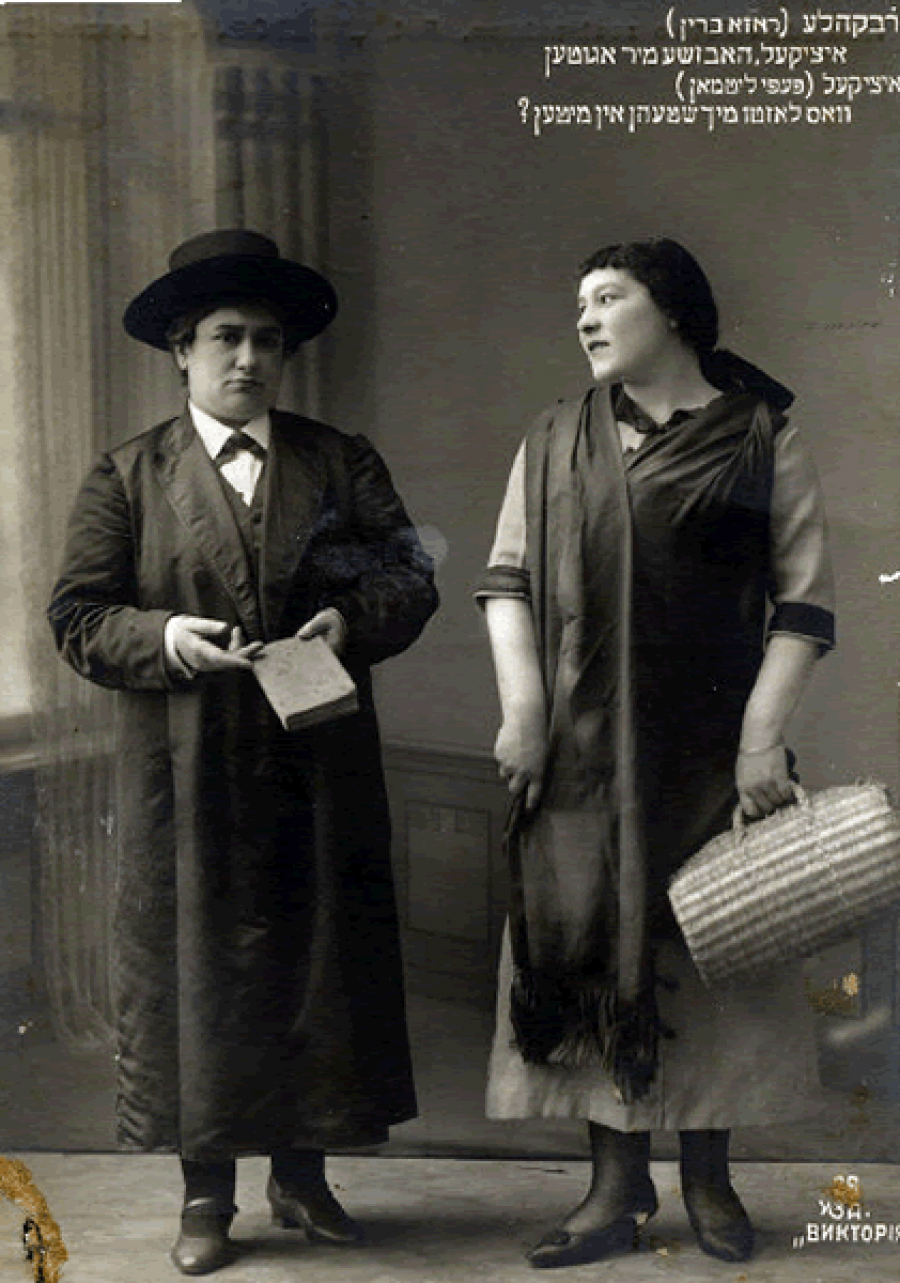
Caption reads: Rivkele (Roza Brin): “Itsikl, have a good one” (or “See ya later”). Itsikl (Pepi Littman): “Why are you leaving me in the middle?”
1905 Bessie Thomashefsky stars in a “trouser” role as Der griner bokher at the People’s Theater.
1905-1930 Pepi Litman was well-known for her extensive repertoire of trouser roles, at times considered scandalous.
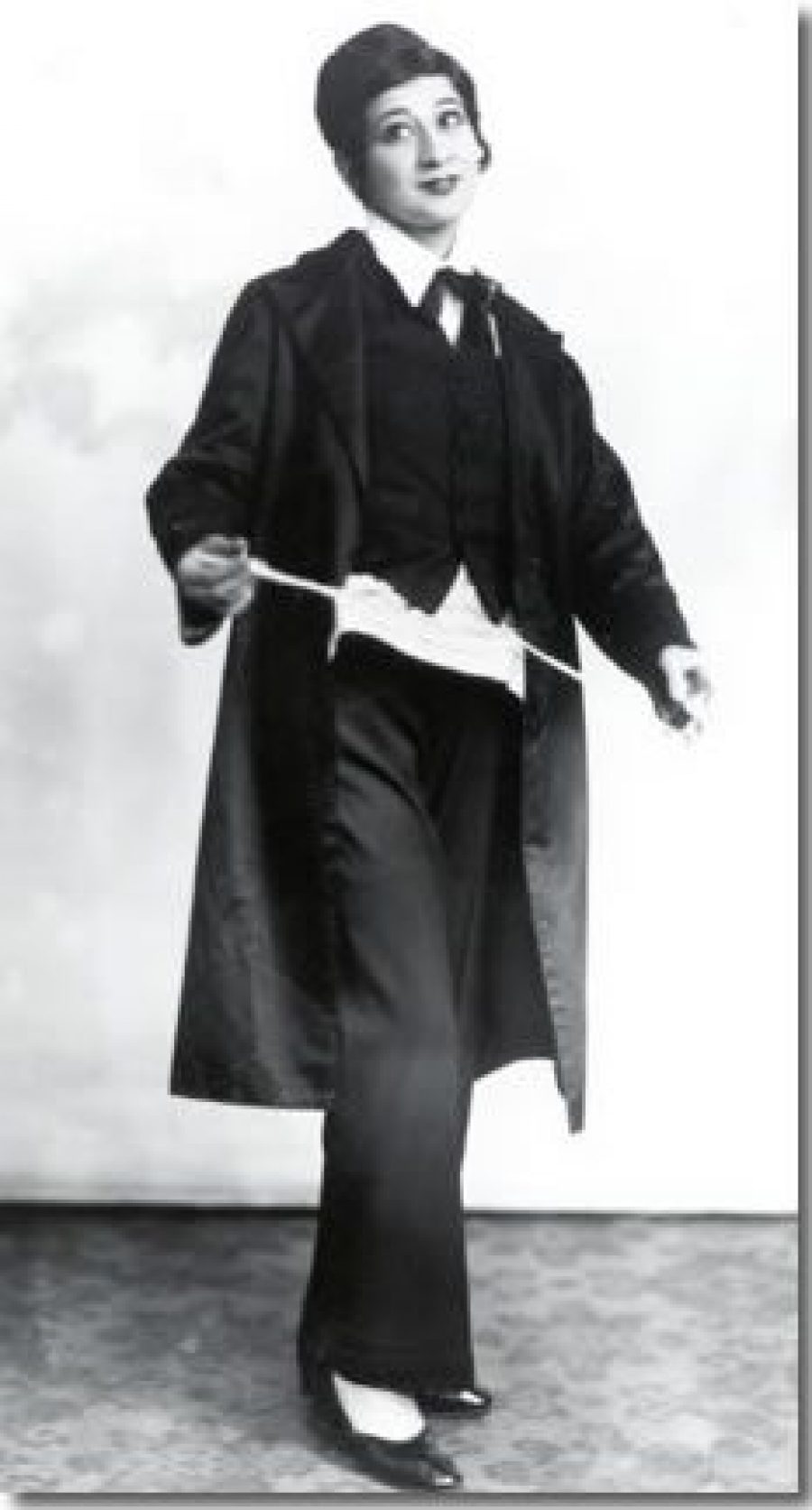
Freydele Oysher
1930s Freydele Oysher sang or performed in trouser roles. According to her New York Times obituary, “She also specialized in one of the Yiddish theater’s staple roles: the Yeshiva boy who — it is revealed in the final, showstopping number — is really a girl. ‘I was cute, I was flat and I was a terrific piece of work,’ she explained in a 1996 interview with The Daily News.”
1983 The release of Barbra Streisand’s English-language movie adaptation of Issac Bashevis Singer’s story “Yentl.”

Eleanor Reissa as Yentl in the Folksbeine production of Yentl in Yiddish. Photo: Richie Fahey.
2002 The Folksbiene produced Yentl in Yiddish.
Early 2000s Drag troupe Kinsey Sicks includes a double-drag item: Irwin Keller’s persona “Winnie” singing “Papirosn,” whose lyrics present the perspective of a young boy.
2006-2007 Folksbiene produces the play Purim in Khelem (English book by Motl Didner, Yiddish translation and songs by Miryem-Khaye Seigel), featuring several drag roles.
2007 “Shabbos’dik,” the drag persona of Zohar Weiman-Kelman performs in Berlin.
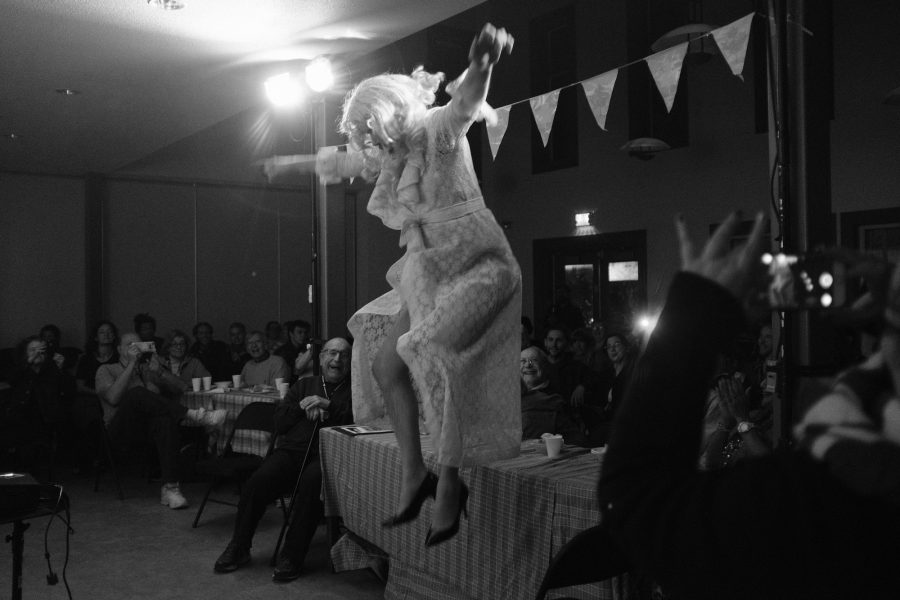
Shane Baker at KlezKanada 2017. Photo Avia Moore.
2018 Debut of Mitzi Manna (drag alter ego of Shane Baker).
Schmutzig shmates
2018 Debut of the Shmutzik shmates, a Washington, DC drag troupe.
2019 Amanda (Miryem-Khaye) Seigel debuts as “Aaron Lezbedeff” following several previous drag roles.
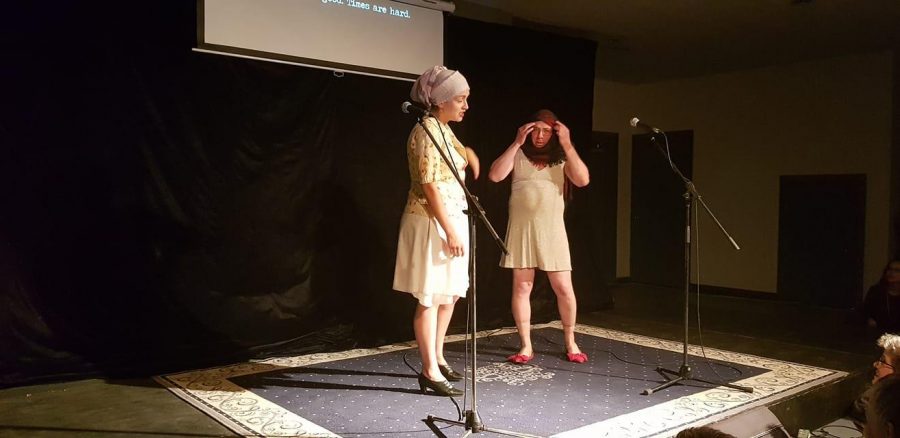
Michael Wex as the Mikve Lady in 2019. Photo: Marilla Wex.
2019 Michael Wex appears as a mikve lady at the KlezKanada Cabaret (in an excerpt from his play Di letste nakht baym Kabaret Yitesh).